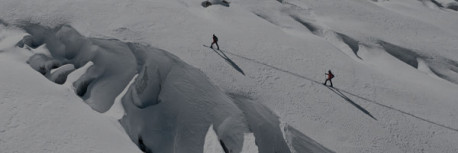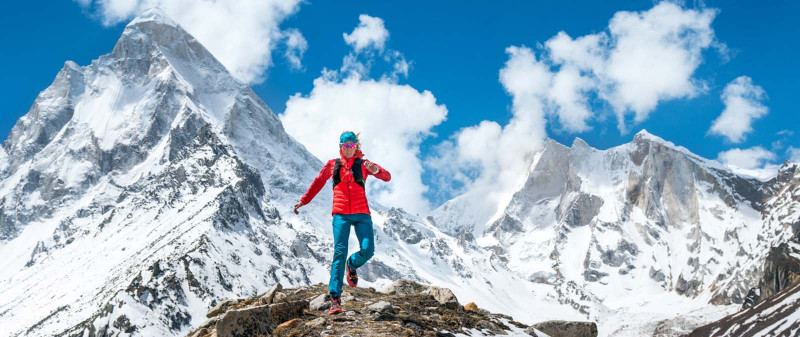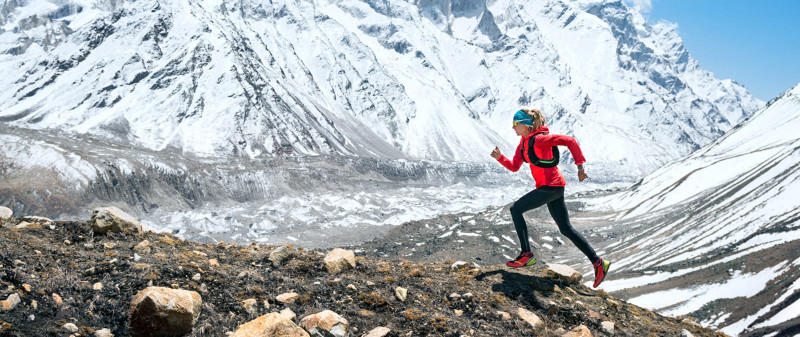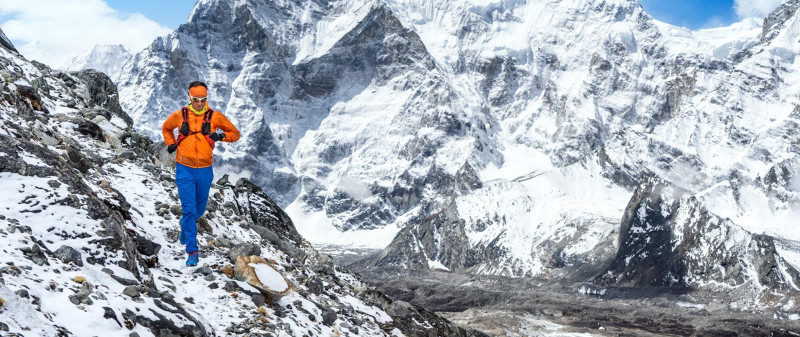Once you’re feeling somewhat normal, start off with short, flat runs to determine your acclimation. Since recovery at elevation takes much longer, do not push the heart rate much above 80% of your max for long periods. I’ve run with some very strong people in the Himalaya and not once do I remember really running uphill. If you want to put in long days, your uphill “running” will probably only progress from shuffling to walking pretty quickly.
Some standard rules; go much easier than you think, drink a lot of water, pay attention to eating patterns, and let your body fully recover between runs.
Trail Running Gear
What weighs seemingly nothing at 1000 meters and has you thinking, “Oh, I’ll just take it”, suddenly adds up to a very influential burden. Weight is greatly magnified above 4000 meters. The unfortunate irony, depending on where you go, is that you may need to carry considerably more to insure you don’t get into trouble. Himalayan weather can go from comfortable to, “Oh shit”, pretty quickly. Be ready.
If I’m going to go up a peak, over a pass, getting up to 5000 meters, or far from shelter, I almost always take enough to get me through a very cold period. Or, at least enough to buy me some time to get down.
Show Products
Alpine Running Himalaya - Trailrunning Above 4,000 Meters
Nowhere is trail running preparation more critical than running long days in cold weather at high elevation. Throw in an unforgiving Himalayan landscape and you are suddenly very vulnerable to any mistakes made in your fitness, planning or gear choices.
My own Himalayan experiences running above 4000 meters come primarily from climbing expeditions and acclimatization periods. I’ve also run at high altitude for the sake of a fun day of trail running, and it’s been during these that I’ve learned a lot about dealing with elevation and exactly what gear to take.
Ueli Steck once told me that athletes are the ones most bothered by the impact of high elevation. Not because they are more prone to its effects, but because they are typically more tuned into their body’s sensations and more sensitive to changes. Because athletes are accustomed to performing well, these changes in the body can be seen as reason for alarm when they are usually little more than a warning to simply slow things down and acclimate.
Headaches, poor sleep patterns, elevated heart rate, decreased appetite, lethargy, and a general feeling of being in slow motion are all normal when going to elevation. For a trail runner traveling to the Himalaya, how high the effects of elevation are felt will be different for everyone, but typically start at around 3500 meters.
If you want to run at this elevation, first you need to spend some time acclimatising, and not running. In popular places like Nepal’s Khumbu Valley, where much of the time is spent between 4000-4800 meters, you might need to spend 4-5 days just to get to 4000 meters to insure that the body adjusts accordingly. And this is just to settle in, going for a proper trail run may take a few more days of going higher still, but coming back down.
Click on the spots to see a product preview
Once you’re feeling somewhat normal, start off with short, flat runs to determine your acclimation. Since recovery at elevation takes much longer, do not push the heart rate much above 80% of your max for long periods. I’ve run with some very strong people in the Himalaya and not once do I remember really running uphill. If you want to put in long days, your uphill “running” will probably only progress from shuffling to walking pretty quickly.
Some standard rules; go much easier than you think, drink a lot of water, pay attention to eating patterns, and let your body fully recover between runs.
Trail Running Gear
What weighs seemingly nothing at 1000 meters and has you thinking, “Oh, I’ll just take it”, suddenly adds up to a very influential burden. Weight is greatly magnified above 4000 meters. The unfortunate irony, depending on where you go, is that you may need to carry considerably more to insure you don’t get into trouble. Himalayan weather can go from comfortable to, “Oh shit”, pretty quickly. Be ready.
If I’m going to go up a peak, over a pass, getting up to 5000 meters, or far from shelter, I almost always take enough to get me through a very cold period. Or, at least enough to buy me some time to get down.
Click on the spots to see a product preview












